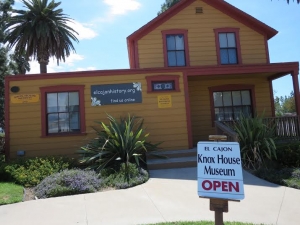
By Robert Gehr
Knox House Museum
280 N. Magnolia Ave. El Cajon, California
619-444-3800
Open Saturdays 11:00 a.m. to 2:00 p.m. (except the 5th Saturday of the month)
September 16, 2014 (El Cajon)--You may have read my last article about a unique place, and a part of El Cajon’s history: www.eastcountymagazine.org/knox-house-museum-offers-glimps-el-cajons-past. Now, dear readers, I offer you part 2 - accompanied by some photos of the interior of this historic and beautiful building.
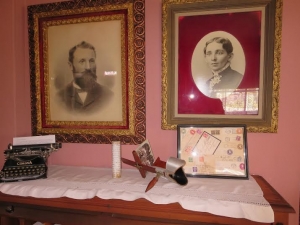 The first thing I noticed during my guided tour, is the size of the rooms - small, yet efficient in design. Then I began to check out all the period items in the place, fascinating! But don’t touch. Many of these things have been donated to the museum by those who care about history. As I walked around looking at the place and it’s curiously wonderful contents, I can’t help but wonder what life was like in days of yesteryear…
The first thing I noticed during my guided tour, is the size of the rooms - small, yet efficient in design. Then I began to check out all the period items in the place, fascinating! But don’t touch. Many of these things have been donated to the museum by those who care about history. As I walked around looking at the place and it’s curiously wonderful contents, I can’t help but wonder what life was like in days of yesteryear…
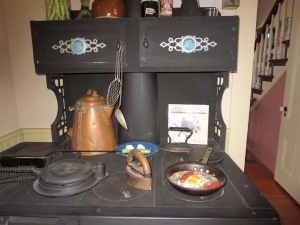 Oil lanterns for light, kerosene heaters to keep the winter cold at bay, no air conditioning or fans to help alleviate the heat of summer, water brought in manually, a wood burning kitchen stove - which in those days was in a room separate from the main house (for accidental fire prevention), no indoor bathroom (outhouses were the norm), no refrigerator (ice box only), no electricity at all.
Oil lanterns for light, kerosene heaters to keep the winter cold at bay, no air conditioning or fans to help alleviate the heat of summer, water brought in manually, a wood burning kitchen stove - which in those days was in a room separate from the main house (for accidental fire prevention), no indoor bathroom (outhouses were the norm), no refrigerator (ice box only), no electricity at all.
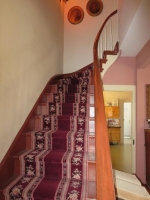 I then venture upstairs to the second level via narrow stairs. The rooms here are even smaller. There is a sewing room, a kid’s bedroom and the adults’ bedroom. I see chamber pots, water pitchers and wash basins in the bedrooms - remember no bathrooms in the place. Additionally there is a room with glass cases, filled with artifacts from those days.
I then venture upstairs to the second level via narrow stairs. The rooms here are even smaller. There is a sewing room, a kid’s bedroom and the adults’ bedroom. I see chamber pots, water pitchers and wash basins in the bedrooms - remember no bathrooms in the place. Additionally there is a room with glass cases, filled with artifacts from those days.
Although this building has been altered a few times over the years, it has retained its original charm.
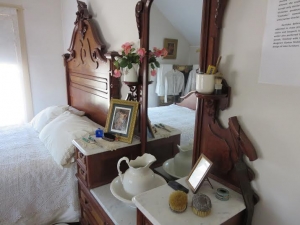 When people had time to relax, entertainment was usually someone playing a Guitar or Violin. Hand crank Gramophones, which used engraved wax cylinders that played music. Story telling was no doubt a pastime, as well as passing on relevant news. There was no television or radio. Usually time was spent working, for there were many things to do, and everyone participated in something, including the kids. Animals needed tending to, vegetable gardens watered and cultivated, and so much more.
When people had time to relax, entertainment was usually someone playing a Guitar or Violin. Hand crank Gramophones, which used engraved wax cylinders that played music. Story telling was no doubt a pastime, as well as passing on relevant news. There was no television or radio. Usually time was spent working, for there were many things to do, and everyone participated in something, including the kids. Animals needed tending to, vegetable gardens watered and cultivated, and so much more.
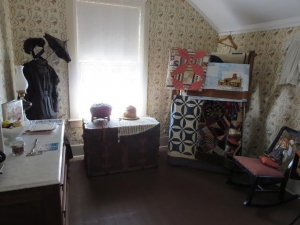 Enjoy, and please remember - monetary donations and docent volunteers are what keep this one of a kind place open so folks like me and you can visit and enjoy a piece of Americana history.
Enjoy, and please remember - monetary donations and docent volunteers are what keep this one of a kind place open so folks like me and you can visit and enjoy a piece of Americana history.





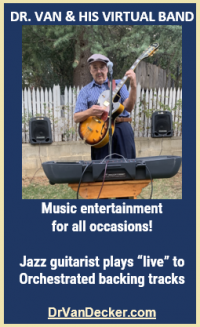


Recent comments